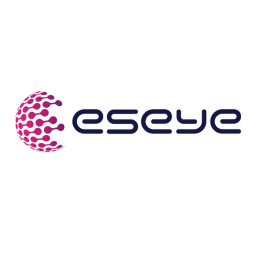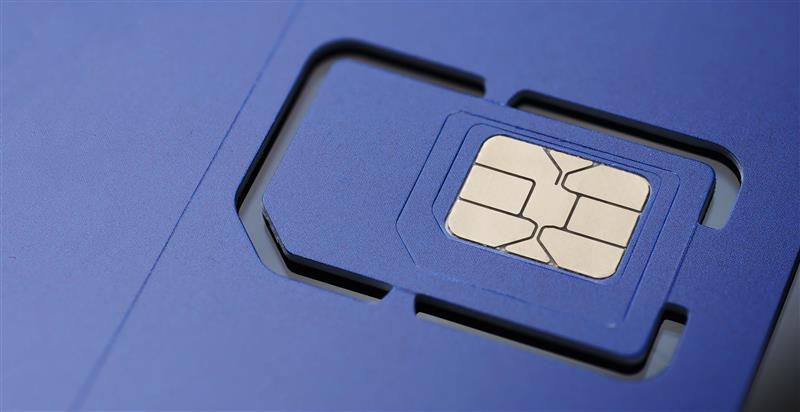Quick Summary
LTE Cat 1 Bis is a variant of LTE technology optimized for IoT and M2M applications. It offers a balance of data speed and power efficiency, making it suitable for devices that require reliable connectivity but do not need the high speeds of traditional LTE.
LTE Category 1 (known as Cat-1 or Cat 1, we will use the former) originally emerged as something of a precursor to IoT back in 2008, with a specification intended for low power, low throughput M2M devices. But it was largely ignored until an update in 2016 saw the release of a new variant, which coincided with the advent of the Internet of Things as we know it today.
LTE Cat-1 and its new variant, LTE Cat-1 bis, are specifications of LTE that have been developed specifically to support IoT and M2M applications. 3GPP Release 8 from 2008 included the original Cat-1 specification, but emerged too early to gain traction as IoT deployments were few and far between and the ecosystem was still in its early stages. An updated version of the specification, LTE Cat-1 bis, was included in Release 13, to better service the vision of IoT that is currently exploding with potential.
What is LTE Cat-1 bis?
LTE Cat-1 bis (‘bis’ is a Latin term meaning ‘again’ or ‘second time around’) is a new variant of the LTE Cat-1 specification introduced in 2016 and more suitable for IoT devices due to it only requiring one antenna versus the two antenna requirement of the original Cat-1.
This adjustment makes the footprint of IoT devices smaller and more cost effective, but everything else about the category remains the same.
Essentially, when most people refer to LTE Cat-1 today, they could also mean LTE Cat-1 bis, but in this article we will specifically refer to it as LTE Cat-1 bis to avoid confusion.
LTE Cat-1 bis explained
Given its age, LTE Cat-1 bis is a mature and globally supported 4G technology offering good support and adoption for IoT devices with low and medium bandwidth needs, and stacking up as a solid competitor to LTE-M and NB-IoT due to lower latency and higher bandwidth.
Hardware costs and power consumption are slightly higher for Cat-1 bis compared to LTE-M and NB-IoT, but it has several benefits, and offers a good migration path for 2G and 3G applications, as well as being ideal for asset tracking, smart meters, and remote sensors.
Technically, Cat-1 bis does not fall into the LPWAN (Low-Power Wide Area Network) family of technologies due to its slightly higher power consumption, marking it as a competitor to LPWA technologies like LTE-M and NB-IoT, and while the hardware costs may be higher than LPWAN devices, Cat-1 bis delivers:
- A high data rate
- Good coverage
- Low latency
In terms of deployment, LTE Cat-1 bis provides a less complex device design based on single antenna while delivering LTE performance, with reduced power consumption and a smaller footprint compared to LTE, making it suited for IoT and M2M applications requiring moderate data rates, such as wearables and vehicle telematics, and only really exempting it from very high-bandwidth application requirements.
LTE Cat-1 bis technology breakdown: features and capabilities
LTE Cat-1 bis offers 10Mbps downlink and 5Mbps uplink data rates, 20 MHz bandwidth and latency of less than 100ms (sometimes much less). Its performance sets it apart from other LTE variants that also support single antenna designs including LTE-M and NB-IoT, which only offer throughput of under 1Mbps.
Cat-1 bis is a good option for applications that require global connectivity as it doesn’t require modifications to base stations or cell towers, working seamlessly on existing LTE networks. Cat-1 bis also has support for voice and video streaming.
While cost is often cited as a detractor for Cat-1 bis, the price of modems and other compatible device modules are falling in line with competing technologies and over time cost will be less of a consideration.
Cat-1 bis low power performance
The key benefit that Cat-1 bis introduces to the specification is the single antenna, and while requiring only one antenna reduces the size and footprint of IoT devices, it also helps optimize power efficiency.
Like LTE-M and NB-IoT, Cat-1 bis also has support for Power-Saving Mode (PSM) and extended Discontinuous Reception (eDRX), which allow the IoT device to go to sleep for long periods of time to conserve battery.
But the power draw of Cat-1 bis remains greater than alternative technologies due to its higher throughput. This means LTE-M may be a better option for longer-life IoT and M2M deployments, as such a device may last up to 10 years. But if you only need to get three or four years out of an IoT device, Cat-1 bis could have some real benefits.
Radio access
Cellular devices typically have multiple antennas – primary and diversity – to connect to different networks, and the original specification for Cat-1 was no different. The design update of Cat-1 bis requires only one antenna making for much smaller, simpler devices that can operate everywhere there’s a 4G LTE network available, providing high-throughput bandwidth, and allowing easy roaming.
Security
Cat-1 bis benefits from all the security capabilities of the LTE specification and is suitable for TCP/TLS end-to-end secure connections, making it compatible with familiar and standard security capabilities.
Mobility and roaming
With Cat-1 bis, full mobility is supported, using the same cell handover features as in regular LTE, making it ideal for both static and high-speed mobility deployments.
Cat-1 bis is well-designed for a wide range of applications and supports a backchannel as well as SMS for device setup and updating eUICC SIMs, including switching of profiles. It also supports voice and video.
For roaming, Cat-1 bis comes into its own, being available wherever LTE is deployed. The main differentiator is that LTE-M and NB-IoT both require modifications to the network to support the technology, whereas Cat-1 bis is enabled on LTE by default.
Full roaming is supported, meaning it is suitable for IoT applications that will operate internationally and across multiple regions.
Cat-1 bis features
| Feature | Cat-1 Bis Protocol |
|---|---|
| Deployment | In-band LTE |
| Carrier bandwidth | 1.4–20 MHz |
| Data rate uplink | Up to 5 Mbps |
| Data rate downlink | Up to 10 Mbps |
| Latency | <100 ms |
| Transmission range | 5 km |
| Maximum Coupling Loss (MCL) | 141 dBs |
| Security | AES 256 |
| Modulation | QPSK, 16-QAM and 64-QAM |
| Duplexing | FDD, TDD |
| Power saving | eDRX, PSM |
| Power class | 23 dBm |
| Battery life time | 5 years |
Limitations of Cat-1 bis
The main consideration that applies to all IoT and M2M deployments is the use case, followed closely by the region(s) the application is to be deployed in. Answering these two questions will help narrow down the options in terms of connectivity and in some cases may even eliminate all but one technology.
Where Cat-1 bis benefits high data rate applications or high-speed data transfer needs, it does so at the cost of battery life, with a viable lifespan of only a few years compared to the decade lifespan potential of LTE-M.
Cat-1 bis use cases
Typical Cat-1 bis applications include massive IoT such as asset tracking, logistics, transport, healthcare, telematics, metering, and smart cities. Anywhere relatively low-power, low and medium-bandwidth use cases appear Cat-1 bis is a viable option, especially if international roaming or a single SKU is a consideration.
The biggest concern will likely be weighing up increased data throughput versus decreased battery life, and in many IoT applications Cat-1 bis might be overkill.
Asset tracking, shipping and logistics
Cat-1 bis has good coverage, handover, roaming, and relatively low power consumption making it ideal for real-time tracking and monitoring of assets. For international applications its roaming support may be a deciding factor. However, if the data throughput of the application is low and battery replacements within a few years are undesirable, LTE-M may be the better option.
Otherwise, Cat-1 bis is suitable for tracking assets by road, rail, or sea (even air if you consider that tracking can resume at the destination) making it suitable for shipping containers, pallets, fleet vehicles, machinery and equipment, and even human (or animal) worn devices.
Agriculture
As well as applications for tracking and securing farm vehicles and machinery, Cat-1 bis could be useful for cost-effective monitoring of crops and soil conditions.
Farming applications include the remote monitoring and control of irrigation systems, environmental sensors for weather, and other real-time alerts about equipment malfunctions.
Remote monitoring, sensors, alarms
Cat-1 bis’s high reliability, wide-range coverage, and in-building penetration makes it suitable for monitoring essential infrastructure, such as utilities, pipelines for the energy or water sector, and other industrial applications. Voice and video support as well as high data rates also make it ideal for applications with communication features.
Healthcare
Cat-1 bis’s relatively low power consumption, coupled with its coverage, mobility, high data rates, and reliable connectivity, makes it ideal for wearable devices and other IoT healthcare applications.
Real-time transmission of critical health data and remote monitoring are possibilities, allowing delivery of personalized healthcare.
Wearable devices
While wearable devices from smartwatches and fitness trackers to augmented reality headsets are becoming more and more common in our daily lives, IoT wearables have a range of applications in the enterprise sector.
Use cases include environmental and biometric sensors that measure environmental factors, like temperature and air quality, or body temperature and stress levels. Other augmentation devices could provide real-time updates or instructions, including data visualization and communication for workers in manufacturing, healthcare, and logistics, or other services such as geofencing and location-sharing.
Smart cities
Cat-1 bis is suitable for a wide range of applications in the smart city sector both publicly and privately. This includes IoT-based building management and monitoring, vending machines, essential infrastructure control and a whole host of safety, security, and convenience features for cities, particularly where a constant stream of data needs to be transmitted.
Retail
Cat-1 bis’s low latency and high data rate make it ideal for point-of-sale (POS) systems, vending such as EV charging points, and ATMs, where customer payment details can be authorized quickly.
Is Cat-1 bis right for my IoT or M2M deployment?
LTE Cat-1 bis provides attractive performance options for IoT applications that need greater throughput and lower latency than alternative LTE and LPWAN variants, while still achieving form factor benefits.
Global coverage and Cat-1 bis being available anywhere LTE is deployed is also a significant consideration. So, if your devices are only meant to last up to four years, and you can achieve significant benefits as a single SKU across the world, Cat-1 bis looks like a sensible choice.
But, the higher power draw and shorter battery life may well exempt Cat-1 bis from applications, especially if the expectation is for devices to be in-situ for up to a decade. Another factor is that while high data rates and low latency look good on paper, there are not that many IoT applications in-market that have such demands. For lower data rate, lower power deployments, an alternative like LTE-M may well be a better choice.
LTE-M for IoT and M2M
4G LTE-M technology is commonly used for IoT and M2M deployments. Find out everything you need to know about this technology, including a detailed breakdown of its features and capabilities.
Eseye brings decades of end-to-end expertise to integrate and optimise IoT connectivity delivering near 100% uptime. From idea to implementation and beyond, we deliver lasting value from IoT. Nobody does IoT better.

